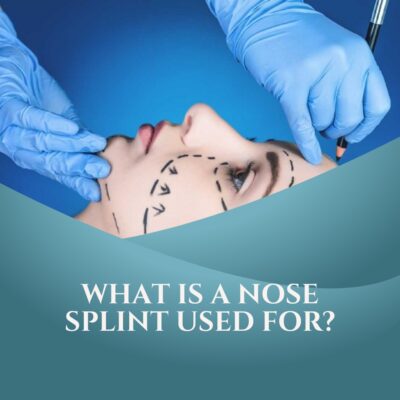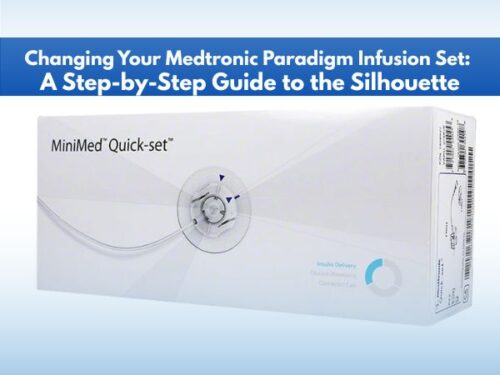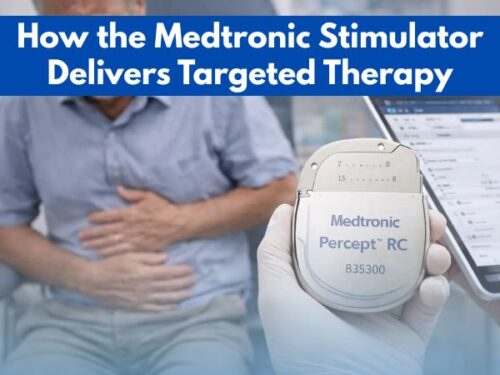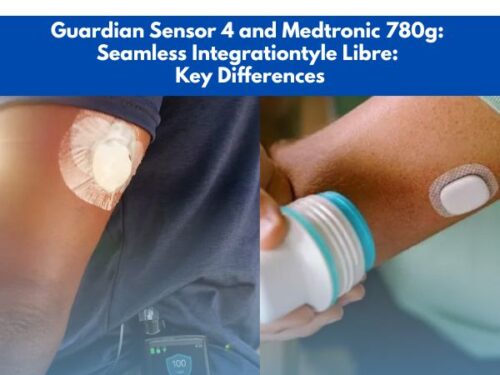What is a Nose Splint Used for?

A nasal splint or a nose splint is used after surgery to help in recovery. These splints help to protect and keep the shape of the nose after surgery. Surgery can be done to fix a broken nose, and improve the appearance or function of your nose. These surgeries might be done to improve the shape and size of your nose. These can also help in correcting a birth defect, repairing deformities after an injury, and improving breathing problems.
A nose splint is a small device made of plastic or silicone which helps to stabilize the nose after nasal surgery. These splints can help to stabilize the nasal tissues and septum after surgery and are used after different nasal surgeries.
Types of nose splints
Nose splints are made using plastic, silicone, aluminum, or Teflon. These are aligned with your nose. The type of nose splint to be used largely depends upon the nasal surgery being done. Nose splints or nasal splints are of two types and both can be used to help in the recovery process after surgery. Its types include
-
Internal nose splints
Internal splints are implanted inside your nostrils. These are implanted by a surgeon to the inside wall of your nostril with the help of one or two stitches. These internal splints are often used after a septoplasty or correction of a deviated septum. A few days or a week after the implantation, these nose splints and the stitches are removed by the doctor.
-
External nose splints
External nose splints are most commonly used after a rhinoplasty. A rhinoplasty is a cosmetic procedure that is done to change the shape of the nose. After rhinoplasty, the nose is bandaged. After bandaging the nose, an external nose splint is placed over the bandage which hugs the nose securely. This nose splint is flexible and is often used in many nasal surgeries. The nose splint is attached to your skin with the help of an adhesive that dissolves after some days. These nose splints help reduce swelling to a minimum.
Uses of nose splints
A nasal splint is an important part of nasal surgery. It is often used in many nasal surgeries. There are two main objectives for which a nasal splint is used. These objectives include:
- After the surgery, a nasal splint is used to stabilize the tissues that have just been operated upon. Nasal splints also help protect the nose as it is healing.
- After surgery, a nose splint acts as a cast for your nose. This helps to protect and keep the shape of the nose after certain surgical procedures.
- Nasal surgery can help in
- Treating breathing problems
- Repairing broken or injured tissue
- Enhancing the appearance of the nose
- Correcting any deformities
The Various Purposes of Using Splints and Nasal Surgeries
The different purposes of using splints and nasal surgeries in which these are used are as follows:
-
Rhinoplasty
A rhinoplasty is also known as a nose job and is one of the most common types of plastic surgery. It can be done to improve the beauty or functionality of the nose. The purpose of this surgical procedure is to improve the appearance of the nose or to help treat breathing problems.
An external nose splint is used after rhinoplasty to help stabilize the nasal tissues that are treated during the procedure. The external nose splint is placed outside of your nose and helps in the recovery process.
-
Septoplasty
Our nose is the entrance of our respiratory tract and is the first organ that helps us in breathing function. Our nose contains bone and cartilage which help divide the inside of the nose in half. This bone and cartilage are known as the nasal septum. If your septum is crooked or deviated and causes difficulty in breathing, then you might need septoplasty.
Septoplasty is the procedure in which the septum is treated to straighten it up which helps in improved breathing. After the septoplasty, an internal splint is used in each nostril which helps in stabilizing the treated septum and compressing the septum which helps reduce bleeding problems. Also after septoplasty, cotton or gauze is used to fill the nasal cavity.
-
Nasal surgery
You might have some blockages in your nose that are not caused by a deviated septum. To treat these blockages, nasal surgery is performed. After the surgery, an intranasal splint is implanted to help in the recovery process. An example of why nasal surgery can be performed is the removal of nasal polyps from the nasal cavity.
-
Nasal fracture surgery
Your nose comprises bone and cartilage. The upper part of our nose is shaped by a bone and the rest of the part consists of cartilage. If you get a crack in your nose’s bone or cartilage because of some injury, it is called a nasal fracture or simply a broken nose.
A broken nose can sometimes be fixed without surgery by your doctor, but in some serious cases, surgery can be important to repair the damage done to the bone or cartilage. During this surgery, your doctor tries to restore the nose to its original size and shape as much as possible. An internal splint is used after nasal fracture surgery for a short period. Also, a dressing is placed on the outside to help the recovery process.
How does a nose splint work?
Nasal splints are used for shaping and protection purposes after surgeries. The shape and size of the nose, nostrils, or septum become different after nasal surgery than before the surgery. To heal the fragile tissues and to maintain the shape and size of the nose after surgery splints are used. These splints also help to protect your nose in case you accidentally get a hit on your nose after the surgery.
The shape of an external nose splint resembles a trapezoid. It has a narrower and wider end. The narrower end is placed in the upper part of the nose which helps the wider part to cover the lower part of the nose.
On the contrary, the shape of an internal nasal splint is like a slightly curved tube that starts at the opening of the nostril and goes a little way into the nasal cavity.
Both of these nasal splints are used for different purposes and are provided by your doctor after surgery. These are placed in or outside your nose till they are no longer needed. However, these nasal splints can be purchased from pharmacy stores and also from online sources. Some of these splints also help to treat Obstructive sleep apnea and help protect the nose from continuous positive airway pressure (CPAP).
Advantages of using nasal splints
Nasal splints are often used after surgeries and are helpful in many ways. Some of the benefits of using nasal splints include:
- Nasal splints are used to prevent hematomas. Hematomas refer to the collection of blood under the skin. Splints used after surgery help to keep the nose’s skin and its bones away from each other. Due to this distance, the pockets of blood are not made and hence hematomas can be prevented with the help of splints.
- Nasal splints are used to help in minimizing the swelling after surgeries.
- Nasal splints help control the bleeding.
- The use of these nasal splints may seem painful but these splints cause no pain. However, intranasal splints can be a little uncomfortable for a few days.
- These nasal splints open the nasal airways and loosen the nasal cavities after the surgery which helps in improved breathing.
- These nasal splints are temporary and can be removed easily.
- These nasal splints speed up the healing process of the nose after the surgery.
- Nasal splints can help protect the nose in case you might bump your nose accidentally after surgery.
Disadvantages of using nasal splints
Some of the disadvantages of using nasal splints are listed below:
- They can cause discomfort.
- The nasal splints may become coated.
- The nasal splints may become loose.
- Although the removal of nasal splints does not cause any pain, it can cause a strange feeling.
Conclusion
Nose splints are an important part of post-operative care and are often used in several nasal surgeries. These nasal splints are used to maintain the new shape after the surgery and also to speed up the healing process. These nose splints also help to protect your nose as it heals. The choice of using a splint or not and the type of splint to be used depends upon the particular case and should be carefully considered by a doctor. Sometimes, it is not necessary to use an external nose splint. An intranasal splint helps in getting a positive outcome after surgery. However, these intranasal splints can be uncomfortable for a few days.



















